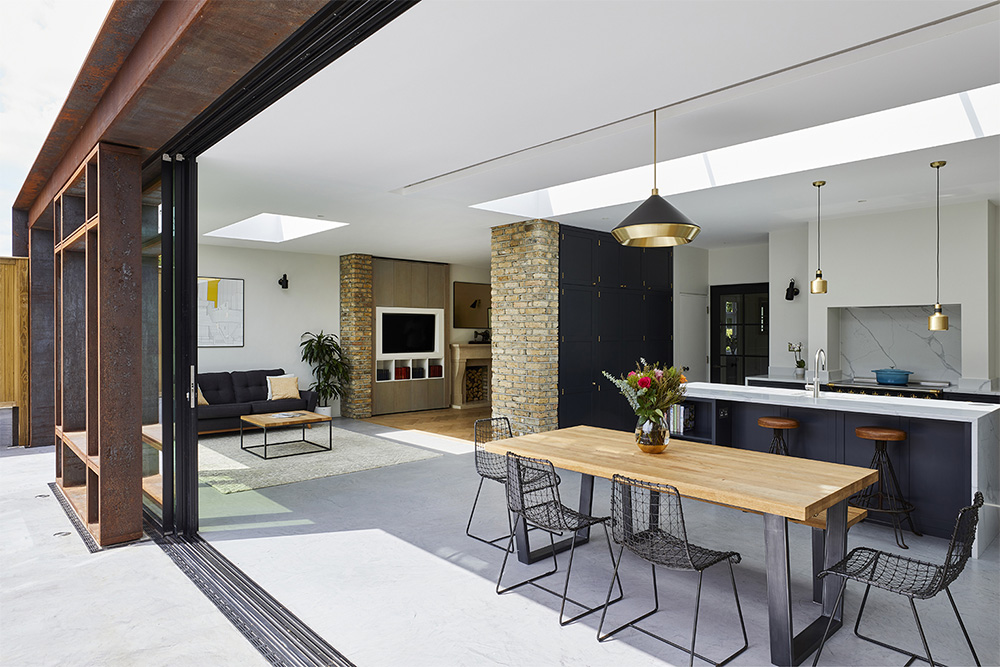Home Renovation: A Complete Guide to Improving Your Home
This article provides a complete guide to home renovation, covering types of projects, popular design styles, creative ideas, processes, and cost considerations. It explains cosmetic, structural, and functional renovations, current trends like modern minimalist and Scandinavian styles, and innovative renovation ideas such as feature walls and multipurpose spaces. Readers will learn how to plan, budget, hire professionals, obtain permits, and execute renovations in stages. Cost ranges and practical tips are also included to help homeowners make informed decisions and create a functional, aesthetically pleasing, and personalized living environment.
Home renovation is the process of making improvements or additions to a home, ranging from minor cosmetic updates to major structural changes. Renovation can be motivated by personal preferences, the need for maintenance, energy efficiency, or the desire to increase a home's market value. Unlike simple decoration, renovation often involves significant planning, budgeting, and professional input to ensure a successful outcome.
Whether you are refreshing your interiors with a new coat of paint or planning to extend your living space, understanding the types, processes, and costs of home renovation is essential for making informed decisions.
Types of Home Renovation Projects
Home renovation projects can generally be categorized into three main types:
1. Cosmetic Renovations
These focus primarily on improving the visual appeal of a home. Examples include:
- Repainting walls or ceilings
- Installing new fixtures or fittings
- Refacing cabinets or updating countertops
- Replacing flooring or tiles
Cosmetic renovations typically do not involve major structural changes and are often less expensive than other types of renovations. However, they can dramatically enhance the look and feel of your home.
2. Structural Renovations
Structural renovations involve more extensive work that changes the layout or structure of a home. Examples include:
- Adding new rooms or extensions
- Removing or altering walls
- Reinforcing foundations or roofs
- Reconfiguring staircases or entrances
These projects usually require professional architects or builders and may involve obtaining building permits. They can significantly increase a home’s functionality and long-term value.
3. Functional Renovations
Functional renovations aim to improve usability, efficiency, or safety in the home. Examples include:
- Upgrading electrical systems
- Installing or improving plumbing and drainage
- Adding insulation or energy-efficient windows
- Installing smart home systems
Functional improvements often complement cosmetic or structural renovations and can result in cost savings through energy efficiency or reduced maintenance needs.
Popular Home Renovation Styles
When planning a renovation, selecting a design style is key to creating a cohesive look. Current popular styles include:
Modern Minimalist
- Clean lines, neutral colors, and open spaces
- Focus on functionality with minimal clutter
- Use of natural light and simple furniture
Scandinavian Style
- Bright and airy interiors with light-colored wood
- Minimalistic furniture with cozy textiles
- Emphasis on simplicity, comfort, and natural elements
Industrial Style
- Exposed brick walls, metal fixtures, and raw finishes
- Open layouts reminiscent of converted warehouses
- Combines vintage elements with contemporary design
Transitional Style
- Blends modern and traditional elements
- Neutral color palettes with textured accents
- Functional layouts that feel both classic and contemporary
Eco-Friendly / Sustainable Design
- Use of recycled materials and low-impact finishes
- Energy-efficient lighting, insulation, and appliances
- Focus on sustainability while maintaining aesthetic appeal
Renovation Creativity and Ideas
Adding unique creative touches can make a renovation stand out. Some ideas include:
- Feature Walls: Accent walls using paint, wallpaper, or textured materials
- Open Shelving and Storage Solutions: Combining functionality with stylish design
- Multipurpose Rooms: Flexible spaces that serve as office, gym, or guest room
- Outdoor Extensions: Adding patios, decks, or rooftop gardens for extra living space
- Smart Home Upgrades: Integrating lighting, security, and climate control through technology
Creative renovations not only enhance aesthetics but also improve comfort and utility, making the home feel personalized and innovative.
The Renovation Process
A successful renovation generally follows a structured process:
- Plan and Budget – Define goals, set a realistic budget, and explore financing options
- Hire Professionals – Engage designers, architects, and builders
- Secure Permits – Apply for planning permission and other required approvals
- Create a Schedule – Outline all stages from demolition to final finishes
- Execute the Work – Progress through demolition, structural fixes, first fix, plastering, and final decorative touches
- Finalize and Inspect – Conduct a final inspection and address any remaining issues
Cost Considerations
- Costs vary depending on project scope, materials, and location
- Kitchens and bathrooms often cost more due to fixtures and finishes
- Average costs: $15–$60 per square foot for standard renovations, up to $150 for complex projects
Conclusion
Home renovation is an opportunity to enhance both the functionality and style of your living space. By choosing a suitable style, adding creative touches, and carefully planning each stage, homeowners can achieve a space that is both aesthetically pleasing and practical. Understanding costs, processes, and design trends helps ensure a renovation project is successful and rewarding.
